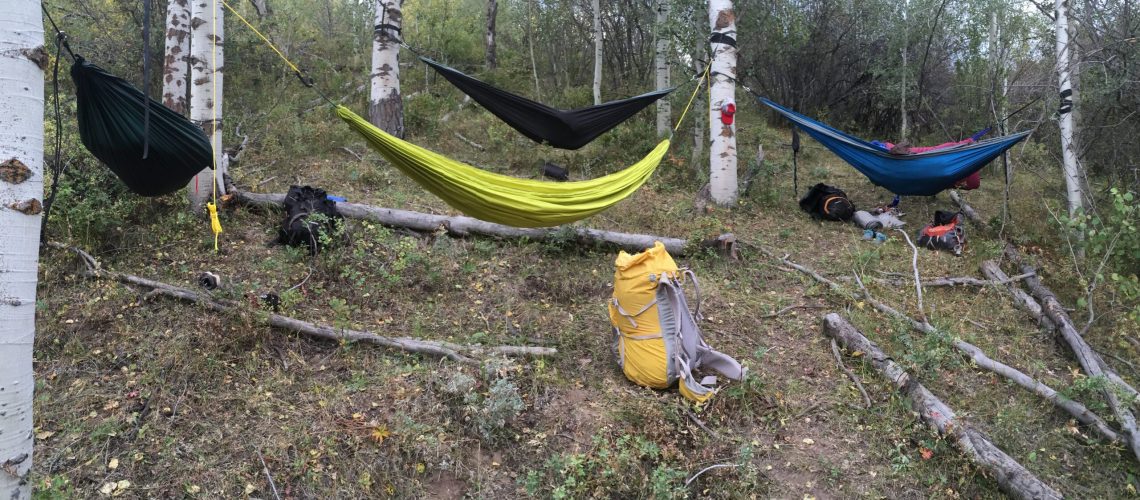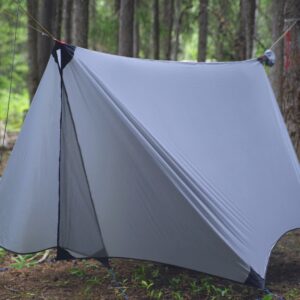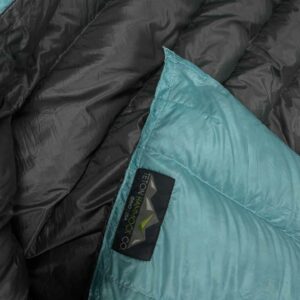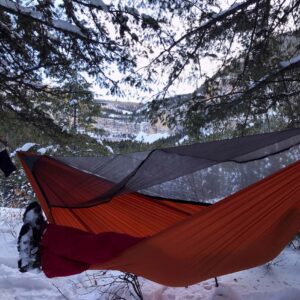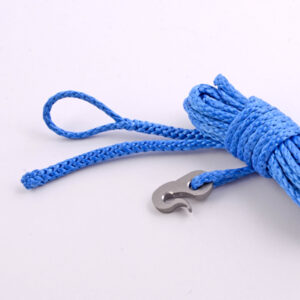Though it’s been around for a long time, hammock camping is gaining new traction as the best way to camp. And, in most cases, it is a fantastic way to enjoy sleeping in the outdoors. However, there are issues that new campers could face that will ruin the trip, like a poor location that doesn’t have trees spaced properly for setting up the hammock. Learn more about hammock camping before your first trip or as a way to improve your next adventure with these Hammock Camping Tips.
How to Camp in a Hammock
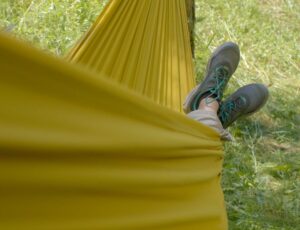
Hammock camping is, quite simply, camping in a hammock instead of in a tent. It does require some gear, so it’s not as easy as just setting up a hammock in the woods and falling asleep. To get started camping in a hammock, you’ll want to purchase the right equipment, learn how to set up everything, and make sure you find the perfect location for your first trip. Those who are new to hammock camping or camping in general may want to try out their backyard for the first adventure. Though the sights are already known, the house is close-by in case anything happens, and there’s less of a chance of major issues causing problems.
Picking the Right Hammock
Picking the right hammock is vital. There are hammocks made from different materials—you can opt for one made from ripstop nylon, so there’s less of a chance of abrasions causing damage and to make sure the hammock can hold plenty of weight.
While you’re looking at hammocks, consider added features as well. Some include bug or rain protection, while others are a simple hammock that’s just designed to keep you off the ground. The features you need can depend on your budget, how easy you want the setup to be, and how much hammock camping you plan to do. When you purchase the hammock of choice, also invest in high-quality straps for hanging it. There are different attachment methods, so you’ll want to choose one that works best for you.
Choosing the Right Location
 While the backyard is the perfect place to try out hammock camping and get used to setting up and taking down everything, the location for your next trip needs to be planned carefully. It is necessary to find a location that has trees spaced properly, and this can be more difficult to do than it looks.
While the backyard is the perfect place to try out hammock camping and get used to setting up and taking down everything, the location for your next trip needs to be planned carefully. It is necessary to find a location that has trees spaced properly, and this can be more difficult to do than it looks.
On top of that, check the area for potential hazards. Tree branches that are likely to fall can cause serious injuries if they fall when you’re sleeping, so pick a tree that has stronger branches full of leaves. Make sure you avoid new or weak trees as well, so the tree isn’t damaged and doesn’t fall while you’re sleeping.
Avoid areas that may have insects like bees or ants, and make sure there are no sharp rocks or other hazards where you’re hanging the hammock. If something does happen and your hammock falls with you in it, you want to be protected against serious injuries.
Though it’s not location-based, consider the time of the year as well. If it’s likely to get very cold or rain significantly, it’s best to choose another time to camp. If you’re going out of town, look into seasonal issues like bugs or weather before planning the trip. The last thing you want is to be stuck during a major weather event or if there’s a late freeze.
What to Know About Hammock Suspension
There are a few different suspension options that can be used for hanging the hammock. If you’ve never used a hammock before, it’s best to stick with one that’s designed for beginners to use. When you’re setting up the hammock, use momentum to help anchor the straps. This will help make sure they’re tight, even if you can’t reach all the way around the tree. Then, make sure it’s ratcheted down as tight as possible, so there’s no chance of the hammock slipping down once you’re on it.
When you are setting up the hammock, you will want the line taut, so you don’t sag too much. There is a difference, however, in how much sag you’ll want when you’re relaxing and when you’re sleeping. If the straps have height adjustments on them, it’s possible to adjust the amount of sag based on whether you’re sitting down or ready to sleep. Let the hammock sag a little bit when you’re sitting, but tighten everything when you’re heading to bed.
Hammock Set-Up Tips
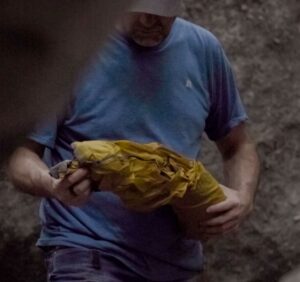 When you’re setting up the hammock, whether it’s in your backyard or you’re far away from home, there are a few things you’ll want to remember that will help make the whole trip better. Start early, so it doesn’t get dark while you’re trying to get everything set up. Then, use these tips:
When you’re setting up the hammock, whether it’s in your backyard or you’re far away from home, there are a few things you’ll want to remember that will help make the whole trip better. Start early, so it doesn’t get dark while you’re trying to get everything set up. Then, use these tips:
- Hang a Tarp – Hanging a tarp, when done correctly, will help keep rain from falling on you while you’re asleep. Add on a drip line, and you should be able to stay dry no matter what the weather looks like.
- Invest in Mesh – Mesh helps keep the bugs away. You’re not going to want to wake up throughout the night because you’re constantly being bitten by mosquitos. Instead, add mesh to help keep you free from pests, especially during the summer.
- Keep Hammocks Close – Keeping the hammocks close together is a good idea for safety reasons, but it may also be necessary if there just aren’t enough good trees to choose from.
Using a Hammock Tarp
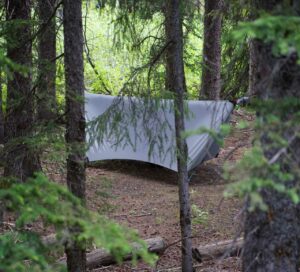 As mentioned, using a hammock tarp is a good idea if there’s a possibility of rain. When it does rain, you’ll get soaked if you’re not prepared. There are a few different ways to hang tarps, but it is best to make sure each corner is tied down, so it doesn’t move with the wind and cause water to splash onto you. Along with the tarp, choose a drip line that can keep water from seeping down the suspension onto the hammock.
As mentioned, using a hammock tarp is a good idea if there’s a possibility of rain. When it does rain, you’ll get soaked if you’re not prepared. There are a few different ways to hang tarps, but it is best to make sure each corner is tied down, so it doesn’t move with the wind and cause water to splash onto you. Along with the tarp, choose a drip line that can keep water from seeping down the suspension onto the hammock.
When using a tarp, there are a few safety tips to keep in mind. It’s important to avoid using tarps when there are strong winds. Make sure the tarp is secure, so it doesn’t come loose during the night, and make sure the tarp is taut, so it stays in place. Be aware of the cords for the tarp, so you don’t end up tripping on them in the dark. If possible, use reflective cords to reduce the chance of anyone falling.
Stay Comfy While You Sleep
Once everything is set up properly, it’s time to sleep. Cold is going to be the biggest challenge while you’re sleeping, as is finding the right sleeping position. Blankets and pillows can help make you more comfortable, as well as help keep you warm. If the temperature is going to drop during the night or you’re in a cooler climate, use a quilt and sleeping pad. It’s also beneficial to wear layers while you’re sleeping. If you end up getting too hot, you can take a layer off. But you won’t want to climb out of the hammock and search for something else to put on if you end up being cold.
Safety Tips When Camping in a Hammock
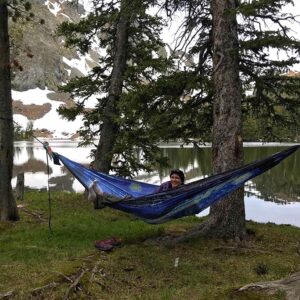 Safety should always come first, and camping is no different. Some of the safety tips you’ll want to know before a night of adventure include the following.
Safety should always come first, and camping is no different. Some of the safety tips you’ll want to know before a night of adventure include the following.
- Keep the Hammock Low – Keeping the hammock low can help prevent major injuries in the event something happens and the hammock falls, or you fall out of the hammock. Try to hang the hammock no more than three feet off the ground.
- Avoid Hazardous Areas – Avoid hanging the hammock over water, over openings in the ground, over sharp objects, or anywhere else that could be dangerous if you get out of the hammock in a hurry while you’re half asleep or if you fall.
- Do Not Stack Hammocks Vertically – Stacking vertically can help save space if there aren’t many good trees to use, but it is best to avoid it. Vertical stacking means someone is higher than the recommended maximum and, if they fall, they’ll fall on whoever is below them.
- Do Not Keep Food in the Hammock – Late-night snacks are fantastic, but they shouldn’t be kept in the hammock. Any food can attract wild animals, and you won’t want to wake up to a bear trying to grab cookies from under your pillow.
- Have an Emergency Plan in Place – Even the best of plans can go awry. The weather might not be as expected, something may break, or you may have other issues. Have a backup plan for how to handle potential emergencies and where you can stay if the camping doesn’t work out.
More Hammock Camping Tips
While you’re learning how to camp in a hammock, don’t forget the things that will make your whole trip a little easier or a little more fun. Use these tips to make your first trip amazing.
- Use a Line for Storage – You’ll need somewhere to put your supplies if you’re going to be away from the hammock. If your car is nearby, this is easy to do. If you hike to a camping spot, however, try a line that allows you to elevate the items away from the ground. This helps keep everything dry and keeps food away from hungry creatures.
- Remove the Hammock When You Leave – Take down the hammock when you leave the campsite, even if you’re only going to be gone a little bit. Hammocks can be a hazard for curious wildlife, plus it can easily fill with leaves and other debris, so it won’t be as comfortable or clean to sleep in the next night.
- Avoid Bringing Too Much – Whether you’re close to the car or at the end of a hike, avoid bringing too much along. The more you bring, the more you’ll have to keep track of and pack up at the end of the trip. Plus, everything will need to be cleaned when you get home, so the more you have, the longer that will take.
- Add on Accessories – Even though you’re packing light, make some room for accessories that can make the trip more fun. String lights can create the perfect atmosphere, a lamp can help you see at night, and portable stands can make it easier to find the perfect location since you won’t have to worry about finding trees.
Keeping Your Hammock Clean
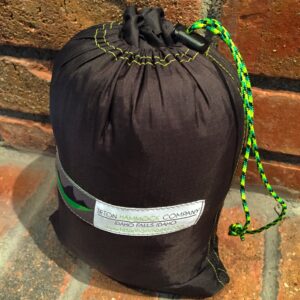 Once the camping trip is over, make sure the hammock and all accessories are cleaned. Sap can be removed with hand sanitizer, though it’s best to test a section first to make sure it won’t cause any damage. Many hammocks can be washed in a washing machine, then dried on a line tomake keeping them clean easy. If this isn’t possible, hand wash the hammock and hang it to dry. Once everything is dry, carefully pack the camping gear into one or two boxes and store them in a safe, dry location until it’s time to camp again.
Once the camping trip is over, make sure the hammock and all accessories are cleaned. Sap can be removed with hand sanitizer, though it’s best to test a section first to make sure it won’t cause any damage. Many hammocks can be washed in a washing machine, then dried on a line tomake keeping them clean easy. If this isn’t possible, hand wash the hammock and hang it to dry. Once everything is dry, carefully pack the camping gear into one or two boxes and store them in a safe, dry location until it’s time to camp again.
Hammock camping can be a lot of fun, and there really isn’t a lot that you need to have, other than the hammock, to get started. It’s the perfect low-cost option for a vacation and can be done just about anywhere, especially if you have a portable stand just in case. If you’re thinking about hammock camping or you’d like to make sure it’s easier and more fun the next time you go, these tips will help. Prep carefully, and you’ll be able to enjoy sleeping under the trees and the stars.

